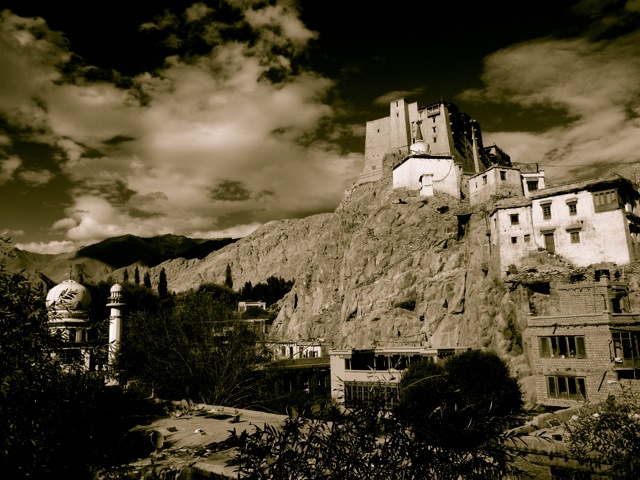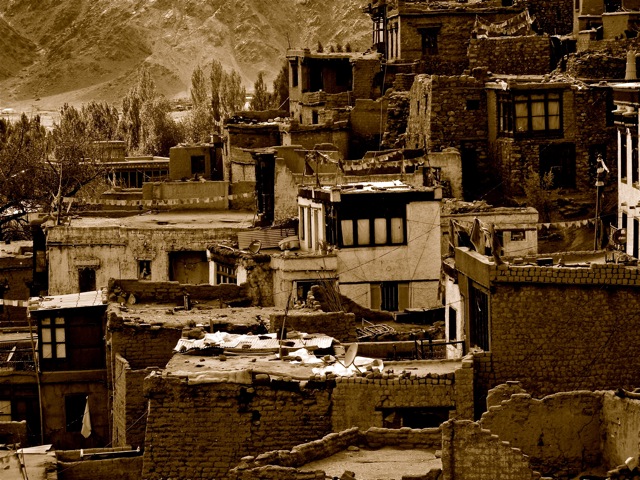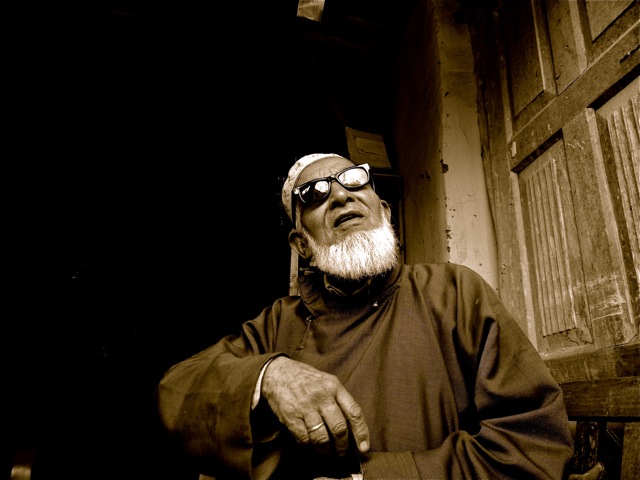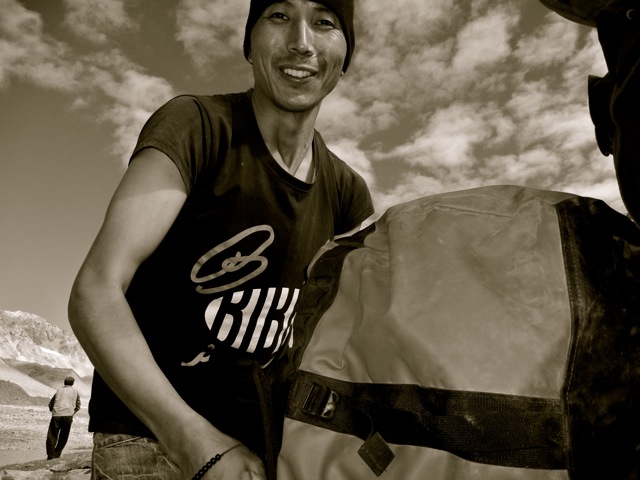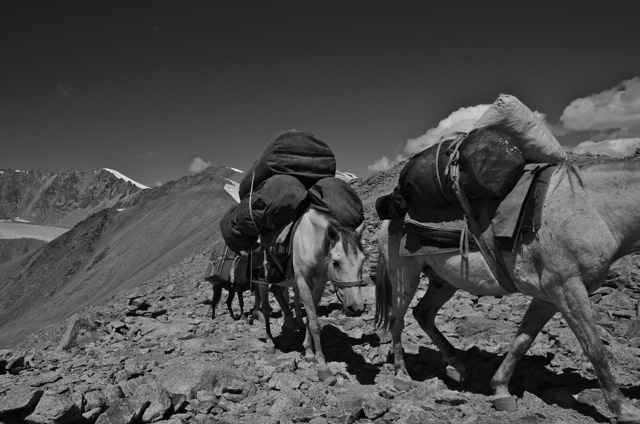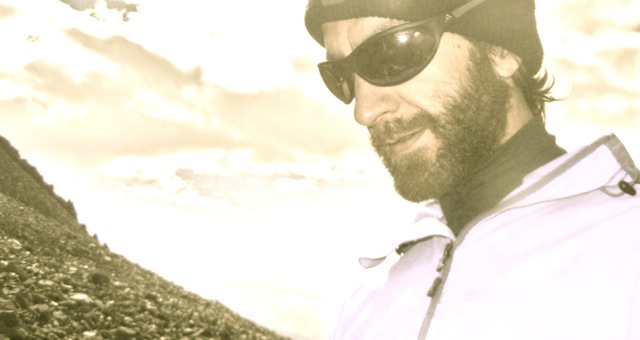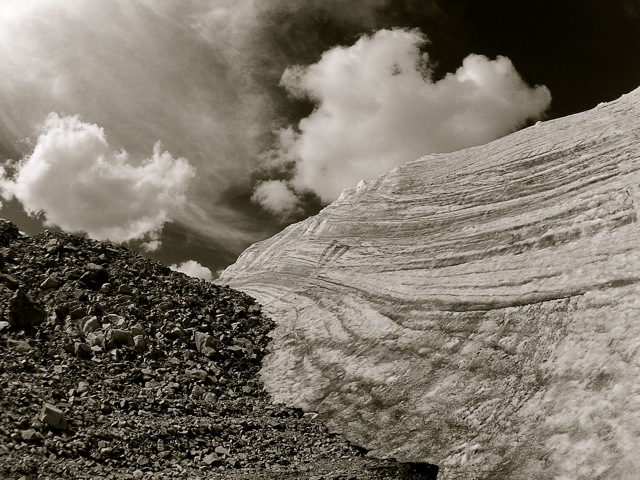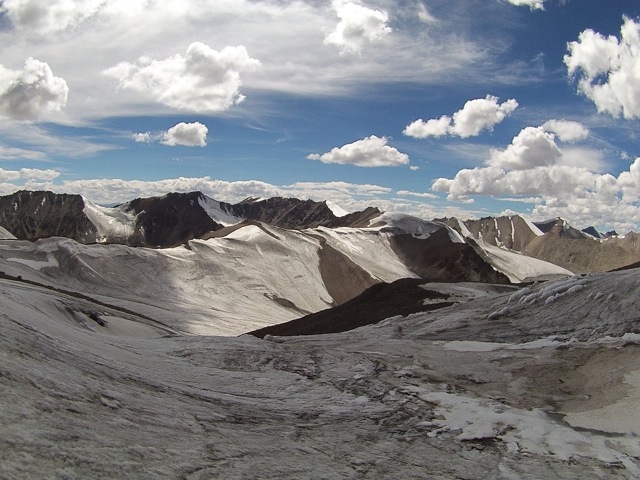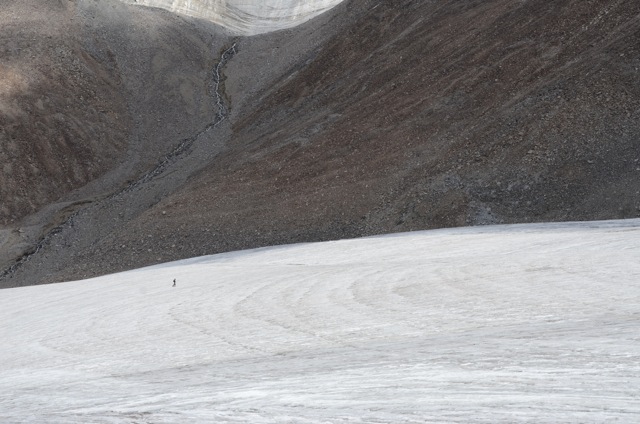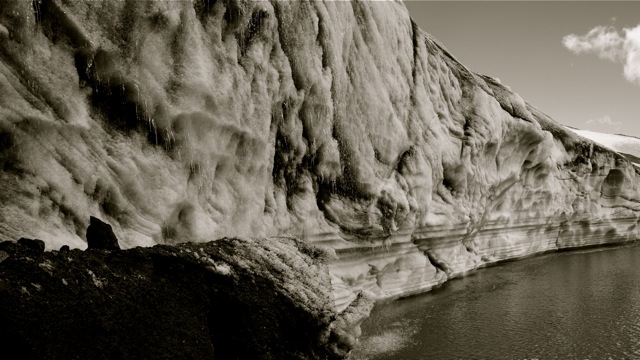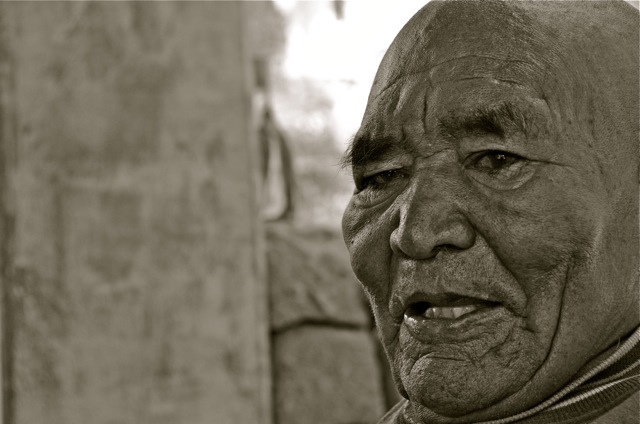-Back for the final instalments of our expedition along the Route of Wind and Wool.
Leh is gentle pandemonium, but this is an overstatement really because it is more a case of Michael and I being overly sensitive to every horn, four-wheeled vehicle, and body that comes close to us. As is so often, I have the urge to simply bolt back into the great silences where I can hide and my mind can function with the winds and stones as my guide.
We have a day of exploring the city’s old trading quarter. Pashmina is everywhere; on signs, in heaps of colour, and on the mouths of locals. It is still alive, this luxury wool off the backs of goats. None of its luster has been forgotten nor lost.
This ancient Himalayan capital and its automobiles and structures make me quite ready within an hour – after a shower – to head back ‘up’ into the hills with our supplies and a pack of mules. But first, we must wait and allow for Karma, Tashi, and Kaku to enjoy the temporary sites, sounds and little luxuries of the cities. Part of journeying in a group knowing needs, taking what’s needed, and then moving along when ‘everyone’ is keen and clean.
West out of the city our reunited team heads. Then, up the Phyang Valley we head bending up into a green series of villages that sits like a beacon amid the dry desolation. The valleys become tighter and once again there is that feeling that we are embraced and protected by these elements and landforms.
Sadanand is gone and in his place we have a man who in some ways is the antithesis of our lined – and missed – warrior. Neat, quiet, with a voice that seems to disappear in the wind, he and his horse team are a team of apparent perfectionists. Understated, careful in movements, and almost dainty movements this muleteer and his charges are almost clinical.
Kaku is newly shaven and looking far better than the rest of us. Karma, unchanged as always is showing only the merest hint that he is once again content with our return to the route and the mountains. The only change in Tashi is that all clothing that he wears is completely clean and the few valiant whiskers that had been attempting to grow over the past weeks have disappeared. Michael and his hunger to be up in the mountains are evident.
We move up and the altitude’s wide effects is hitting the team for whatever reason. We are not higher, nor is the route more difficult. Altitude’s effects are not simply height alone. Air pressure, metabolism, and temperature all seem to be playing at various team members. Our horseman is another epic character as it turns out, but his ‘epic’ qualities are linked to an understated competence and knowledge of his horses and of the land rather than Sadanand’s bulletproof, iron entity. There is no grumbling from this new muleteer and his horses and mules genuinely seem to enjoy his company. He needs not scream or even threaten. Gentle little sounds and soft sympathetic looks maintain our animals’ pace.
The ‘Bharal’ (Blue Sheep) is more goat than sheep (I’m told) and more grey than blue. They are also the main delicacy of the Snow Leopard. This solitary cat has been on the fringes of my mind for the entire journey. I’m sure it has gazed upon our caravan at times and I often wonder if we’ll be granted a view, but for whatever reason I’m sure that we’ll only see one, if it allows us to. But, it is the Bharal and its form that takes the breath.
At camp one night, at close to five thousand metres, a group of six males descends slowly and passes within a few dozen metres of us. These thick-chested silent animals are so close to eachother that they cannot help but brush eachother as they move like a phalanx of the natural world. Alert (for the silent cat that must be around), but seemingly at a bit of ease, they pass us without so much as an acknowledgement; keeping only one of those famed baleful goat eyes on us. We evidently don’t rate as dangers. Powerful and graceful, they are magnificent and strange in their shape and deliberation. We are entirely silent and even Karma is wide-eyed…even the sultan of calm is impressed and I feel a happiness at this knowledge.
Lasermo La is a pass that was once crossed with regularity by caravans heading to and coming from the Nubra Valley. Now it is utterly quiet in its appraisal of all things. We get up it by late morning and the light of a furious sun lights up the top of the world. Continuing up the plate-like glaciers Michael and I move towards six-thousand metres. What matters is to be able to look down upon the curling ridgelines of stone and the glaciers being blown by winds into frozen waves. Nothing else matters and not for the first time I’m utterly loathe even considering leaving the heights. “Stay in the present” I am reminded by a little voice inside. Much as I’d like to listen to it, I ignore it, and simply let the breath that heaves in me take over. These spaces and their accompanying winds will long remain in the mind and blood and they are instant memories when they hit you.
The Nubra waits with heat for us. My dreamlike lusts to see a Snow Leopard have come to nothing. Wolf scat was found along our route but not one discernable trace of the solitary and very legendary cat. Dust, a drop in altitude, and the inevitable feelings of gentle edginess come too. We are leaving the sanctity of the heights and moving back down into the lands of ‘two-footers’, the land where we people apparently. Sand dunes, Bactrian camels, and a little closer to the border with Pakistan, the valley holds softer winds and more memories of the days of trade.
Yarkhandis, Dards, Changpa nomads, Sikhs Kashmiris, Newaris…all of these peoples, and a dozen others were active and have left their DNA in this region. A region that is a crucible of Central Asia, Tibet, and India and it positively hums with these cultural infusions even now. The DNA remains in the business ways, it is in the sands of the Nubra Valley and it is in the nearby glaciers, whose tempests took many a life.
Two figures we meet in the valley – one a trader, and one a sage witness to trade – remind me that trade was very much more than simply commodities and economics. The ancient witness reminds us very clearly that trade was like a window letting in light. It was about sharing, and it was about adventure and it was entirely about relentless movement.

